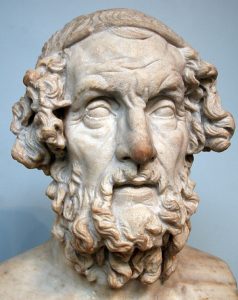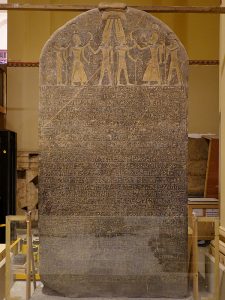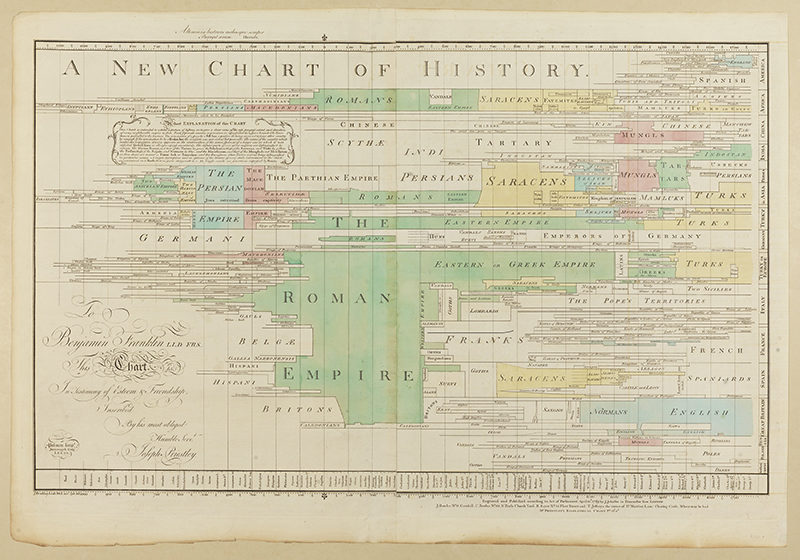Why Did the World End in 1200 BCE?
By Jesse Millek
For anyone acquainted with the history of the ancient Near East, the year 1200 BCE can conjure up any number of images of desolation and bloodshed. But what, if anything, really happened?
Some might envision the Sea Peoples made famous by Ramesses III and a 19th century French Egyptologist named Maspero who detailed the carnage brought on in the wake of these rampaging villains on boats. Others might recall a period of drought and social unrest as starving peasants rose up to overthrow their masters. 1200 BCE might also bring to mind the destruction and burning of once mighty cities from the Mycenean palaces of Tiryns, Mycenae, and Pylos, mythical Troy, Hattusa the capital of the Hittite empire, or the trading emporium of Ugarit. Soon after 1200 BCE, once vibrant trade and interregional contacts dissolved while many regions lost or gave up writing leading to a Dark Age and an end to the once glorious Late Bronze Age.

This intentionally overly dramatic introduction to 1200 BCE can certainly be challenged since it is not entirely clear what the Sea Peoples destroyed if anything, Hattusa was abandoned prior to destruction, and at least the tin trade never ceased after 1200 BCE. Nevertheless, challenges to the standard narrative aside, there is a worthwhile question pursing about 1200 BCE outside of collapse and Dark Ages. Many have noted that nothing practically of interest happened in 1200 BCE and this naturally leads to the question: why did scholars choose 1200 BCE, or more accurately, ca. 1200 BCE as the year when civilization collapsed in the Eastern Mediterranean?
The origin of 1200 BCE stretches back hundreds of years in the scholarly literature, long before there was our modern use of the (itself problematic) Bronze Age terminology, much less an archaeologically derived reconstruction of events. One of the first meaningful applications of 1200 BCE appeared in Joseph Priestley's 1786 edition of A Description of a New Chart of History. Priestley – chemist, philosopher, theologian and much more – began his arrangement of history at 1200 BCE though he was not entirely clear on why he chose this particular date. Equally unclear is why he assumed that no empires other than Egypt and Judah had been established prior to 1200 BCE; yet, while the date certainly was not random he did not correlate it with any major events. Priestly dated the fall of Troy to 904 BCE and makes no mention of anything particularly important occurring in Egypt, while he dated Joshua's conquest to the 15th century BCE following the traditional Biblical chronology. In fact, Priestly paid more attention to the fact that his chart of history was nearly three feet long and two feet wide rather than explaining why the meaningful part of history began at 1200 BCE.

Roman Bust of Homer
While Priestley may have been one of the first to emphasize 1200 BCE, for our modern understanding, the true importance of 1200 BCE stands on two pillars established in the 19th century. Moreover, both columns supporting the year's reputation seemingly originated with the same German historian named Arnold Hermann Ludwig Heeren who was a prolific writer of world histories during the late 18th and early 19th centuries. Of the two pillars, the first hearkens back to ancient Greece and Homer's mythical telling of the fall of Troy. While Homer may not have given a concrete calendar year for the Trojan War, classical historians worked out a number of dates for the demise of the city, done in by means of the infamous wooden horse. Dikaiarchos dated it to 1212 BCE, the Parian Marble selected 1209 BCE, Thrasyllos and Timaios both chose 1193 BCE, Eratosthenes and his followers Apollodoros, Kastor, Diodoros, Apollonios, and Eusebios settled on 1184 BCE, while Sosibios chose 1171 BCE. From this list, it is obvious that all of the dates fall roughly around 1200 BCE.

Arnold Hermann Ludwig Heeren (1760—1842).
Given historians' love of rounding numbers when there is no secure calendrical year for a historic event, this is exactly how the fall of Troy came to be 1200 BCE when Heeren rounded the date for the Trojan war in his 1817 volume, A Manual of Ancient History. In Heeren's organization of Greek prehistory his "first period" was dubbed, "The most ancient traditional history down to the Trojan war, about B.C. 1200." Of course, 1200 BCE also naturally acted as the starting date for his second period that ended with the Persian conquest. Interestingly, in the 1810 and 1799 editions of the book, Heeren never mentioned 1200 BCE, noting only that Troy fell in 1190 BCE after 10 years of war.
The second pillar that provided 1200 BCE with so much meaning is the date for the fall of Ramesses's II glorious 19th Dynasty. Once again, our intrepid German historian Arnold Heeren is likely to blame, and much like for Troy, Heeren reached back to the classical world for inspiration. In his 1826 volume, Historical Researches into the Politics, Intercourse, and Trade of the Carthaginians, Ethiopians, and Egyptians, Heeren employed the 3rd century BCE Egyptian priest Manetho's king list for the Egyptian dynasties. In this list, Manetho recorded that the last pharaoh of the 19th Dynasty was Thuoris, who was known in Homer's account of history as Polybus the husband of Alkandra. It just so happened that in this view of history Thuoris was pharaoh when Troy fell, and since Heeren dated the fall of Troy to 1200 BCE so too did the 19th Dynasty end in this same year. As he wrote in the 1838 edition of the book, "The most brilliant period of these two dynasties [18th and 19th] fell between 1800 and 1200 [BCE]. This is despite the fact that a contemporary of his, the Italian historian Rosellini, dated the end of the 19th dynasty to 1270 BCE well before 1200 BCE.

The Israel Stele.
From here, 1200 BCE only grew in importance as other critical events were subsumed into this date. John Anderson noted in his 1881 New Manual of General History, that the most splendid period of Egyptian history ended in 1200 BCE while at the same time 1200 BCE was the beginning of the "Migration of the Hellenic races." De Rouge and Maspero who translated and popularized the Egyptian texts from Medinet Habu describing the Peuples de la Mer (Sea Peoples) did not specifically date the events to 1200 BCE, but Flinders Petrie one of the fathers of modern archology did. In 1890 Petrie mentioned that Egypt had suffered an invasion from the Mediterranean at 1200 BCE a fact that Harry Hall reiterated in his 1902 book Keftiu and the Peoples of the Sea. Cecil Smith added in the Mycenaeans to the list of fallen kingdoms ca. 1200 BCE stating in 1892 that, "We are confronted with the problem that the 'Mycenaean' civilization was in existence at any rate from 1600 to 1200 B.C."
Boyd Dawkins in 1897 went further claiming that the Dorians attacked Greece at 1200 BCE. With the discovery of the Israel Stele in 1896 William Ward brought the Israelites to 1200 BCE in that same year saying that, "All that can now be said is that about 1200 B.C., Merneptah found Israelites in Palestine." In 1910 John Garstang ended the Hittite empire after the first invasion of the Phrygians at 1200 BCE. Even Atlantis was drawn into 1200 BCE as Edwin Balch proposed in 1917 that Minoan Crete should be equated with the mythical island kingdom, "Whose civilization we know was wiped out absolutely about 1200 B.C."
With that, 1200 BCE became the standard year for the end of civilization in the Eastern Mediterranean, mostly thanks to one German historian who liked to round his dates. Whether or not 1200 BCE should still hold merit as a chronological marker in our modern periodization of history is a question that must await scrutiny another day.
Jesse Millek is a Visiting Scholar in the Department of Middle East Studies at the University of Michigan and a Research Fellow at the German Research Foundation. His current project is titled, "Destruction and the End of the Late Bronze Age in the Eastern Mediterranean" funded by the German Research Foundation.
-- Sent from my Linux system.



No comments:
Post a Comment